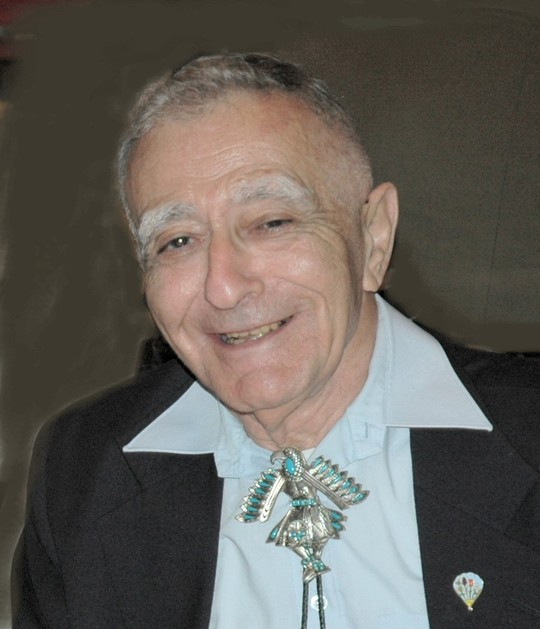|
ERIC W. WOLF (1922-2007)


WMS Past President Eric W. Wolf died peacefully April 18, 2007 after a brief stay in a hospice in Rockville, Maryland. He was 85. He had a long-time interest in the history of cartography, discovery, and exploration; he was a collector of antiquarian maps and of books with and about maps.
Eric Walter Wolf was born February 20, 1922, in Frankfurt, Germany. He attended Philanthropin, a noted Jewish school in Frankfurt, and also attended schools in Switzerland, Italy, France, and the United States. He arrived in New York in 1937 as a refugee from Hitler. During World War II, he served in the U.S. Army Signal Corps, attached to an armored unit in Europe. During the war he had brief duty as General George Patton’s interpreter. He earned a BS in electrical engineering from City College of New York and his MS degree from Ohio State University. After a job working on aircraft systems at Wright-Paterson Air Force Base in Dayton, Ohio, he began working on early computer applications, including Project Whirlwind at MIT’s Lincoln Laboratory. While at Lincoln Laboratory, he pioneered the use of computers to track aircraft, and developed the coordinate system used to locate their position as part the SAGE air defense system, a program intended to defend the United States from attack by manned bombers from the Soviet Union. Later, he was associated with the development of the ARPANET, the predecessor of the Internet.
His career included stints as the Director of Computer Programming and Technical Director for the International Electric Corporation; Technical Director of the Naval Command Systems Support Activity (NAVCOSSACT); and was the Manager of Washington Operations for Bolt Beranek and Newman Inc. He was in Saigon, Vietnam, during the 1968 Tet Offensive while working there for the US Navy.
A collector of antiquarian maps and books, Mr. Wolf was a founding member and President (1981 and 1999) of the Washington Map Society; Secretary of the Society for the History of Discoveries (1991-1997) and its Vice President and President (1999-2003); a Fellow of the Royal Geographical Society, a contributor of articles and book reviews to, among others, Terrae Incognitae, Bulletin of the Geography and Map Division of the Special Libraries Association, Alaska History, The Portolan, Mercator’s World, and Imago Mundi, and was the author of “The History of Cartography: A Bibliography.” Eric chaired the planning and organizing committee for the Eighth Annual International Symposium of the International Map Collectors’ Society (IMCoS), held in Washington, D. C. in 1990; this was the first meeting of IMCoS in the USA. He was a founding member and first co-chair of the Philip Lee Phillips Society, the support group for the Geography and Map Division of the Library of Congress (1996-97). An exhibition of his collection “From Plantagenet to Saxe-Coburg: Maps from the Fiat Lux Library” was shown at the Gelman Library of the George Washington University in 1995; the exhibition was accompanied by an illustrated catalog prepared by Eric. He considered his favorite cartographic interest to be political cartoons with cartographic themes.
An exceptionally avid world traveler, he visited every continent, from Antarctica to Spitzbergen, Mongolia to the Galapagos, all fifty states, scores of countries, and frequented operatic and Shakespearean performances.
He is survived by his spouse Elicia (Lee), and sons Dean and Lloyd.
|